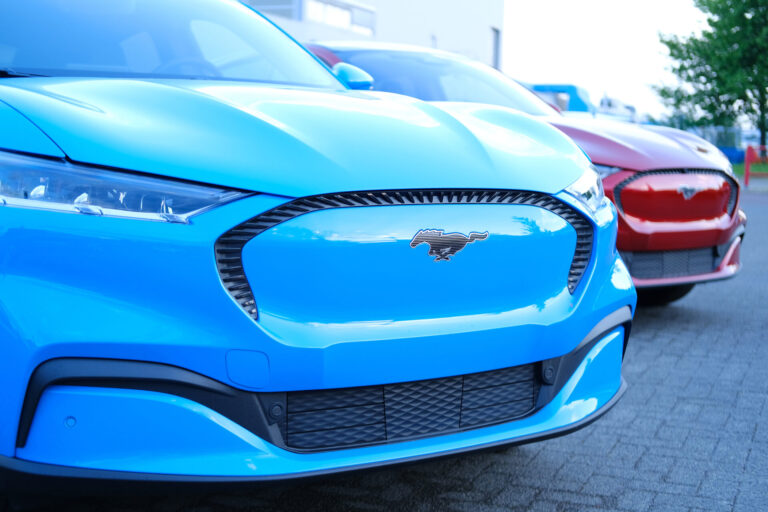November 5, 2019
In the next 15 years, drivers in big cities may trade cars for car-sharing services and electric shuttles and cut car ownership by 70%.
By Veronica Combs |
Cars are inefficient: They are parked 95% of the time.
Cars generate a lot of air pollution: An average passenger car emits about 4.6 metric tons of carbon dioxide each year.
Cars are expensive: An owner spends about $9,576 per year on gas, maintenance, insurance, and loans.
Autonomous vehicles (AVs) could change all of these dynamics, if they are shared and electric.
Instead of owning a car, people could buy a mobility pass that covers everything from bus rides to scooters to a seat in a shared autonomous vehicle. Researchers estimate that autonomous vehicles could replace about 70% of the passenger cars in cities today by 2035.
ZipCar founder Robin Chase says the key to realizing those benefits is to combine car sharing and ride hailing. In “The Future of Autonomous Vehicles,” she claims this approach to AVs could deliver “door-to-door travel at the speed of private car travel at the cost of a subway ticket.”
While AVs are still 20-30 years away from widespread adoption, city planners are already thinking about how roads and regulations will have to change to make room for these new “drivers.” Business leaders and car owners will have to answer some of the same questions.
Changing the cityscape
Today cars get the majority of space on most urban roads with wide-driving lanes as well as on-street parking. Sidewalks and bike lanes get less space.
Researchers at the Department of Urban & Regional Planning at Florida State University have reimagined city streets to show how autonomous cars could reshape city landscape. Researchers predict that AVs will drastically change the design and functioning of the built environment.
First, autonomous vehicles do not need wide lanes or medians to travel safely, so this space can be freed up for pedestrians and bike riders. Also, after dropping off passengers, AVs will keep driving around or go back to home base. An office full of people won’t need parking spots, so land currently dedicated to parking lots can be repurposed.
However, some urban planners think that AVs have the potential to make urban sprawl even worse.
The University of Maryland’s National Center for Smart Growth Research and Education considered the impact of AVs on the growth of the Washington-Baltimore region when they modeled how the region might grow.
They found self-driving vehicles could cause residents to take more trips, use transit less, and live farther out. Many of the additional trips, researchers said, would come from children, the elderly, and people with disabilities.
If people can catch a ride door-to-door, they might be less likely to use public transit or pay premium rents to live or work near subway stations.
The Trump administration has lifted many of the rules for AV testing, which may allow some of the worst case scenarios to develop.
Car sharing offers cars-as-a-service
Some entrepreneurs are not waiting for AVs to be ready for the consumer market. Turo and Enterprise are testing car-sharing services around the country. Turo’s platform allows car owners to rent out their vehicles during designated times. Car owners can use this income to pay down car loans. Enterprise CarShare is a membership service that allows customers to reserve a car on an hourly or daily basis. A Car Sharing Research Report predicts that the market will surpass $11 billion by 2024. UBS predicts that by 2035, 80% of people will use robotaxis where they are available, and that car ownership in urban areas will fall by 70%.
Many cars in these programs are traditional gas-powered cars, but a public-private partnership in Los Angeles uses all electric cars. BlueLA launched in low-income neighborhoods in April 2018. Residents can rent an electric car at subsidized rates to run errands or travel outside the public transportation network.
Stations have five parking spaces, five EVSE and a reservation kiosk, and two to three vehicles at each station.
The project now provides:
- 80 electric vehicles
- 130 charge points
- 26 charging stations
- Nearly 2,000 BlueLA members
- Over 12,000 trips
The city estimates that the program helped to avoid 260 metric tons of carbon dioxide in the first year. The goal is to recruit at least 7,000 new users in three years. This level of membership could result in 1,000 fewer private cars on the road, which could reduce an estimated 2,150 tons of greenhouse gases annually. The city and operator share the costs, risks, and rewards.
Testing electric shuttles in Austin
Cities are also testing electric, on-demand shuttles, another mobility service that could take more private cars off the roads.
Pecan Street in Austin ran an eight-month pilot project in three neighborhoods, where residents could hail the shuttle with a text, phone call, or via the app. They could be picked up anywhere in the service area and go to any destination within the service area.
Pecan Street wanted to understand how people would use this new service and whether this service could solve the first mile/last mile problem and increase ridership for bus and light rail lines.
“In some areas, we saw large numbers of users using this last-mile shuttle to connect to public transit, when people previously would have driven to the light rail station,” Pecan Street CIO Grant Fisher said. “We wanted to make the entire trip green and lower emissions.”
One of the routes was in the Mueller neighborhood, which included a housing center for older adults. Fisher said that a lot of residents in that complex used the shuttle service.
“It was a social event — they plan trips together, and they all knew the driver,” Fisher said.
Fisher said that Austin’s public transportation company Capital Metro is now testing similar on-demand shuttles. Fisher said the project changed his thinking about public transit in general.
“We started this project thinking in terms of how we could supplement public transit, but by the end we could see how it could be a new form of public transit,” he said.
Columbus has tested one route for a self-driving electric shuttle and is making plans to test another route as part of the Smart Columbus project. May Mobility used six electric vehicles that could hold up to five passengers and an operator. The shuttles can go up to 25 miles per hour and are equipped with sensors and intelligent software. During the testing phase, an operator was always on board to oversee the operation of the vehicle. The Smart Circuit shuttle covered more than 15,000 miles and transported more than 10,000 passengers around the city’s downtown Scioto Mile during the nine-month test phase.
The city is now testing a new electric shuttle route to make it easier for residents to use public transportation. EasyMile will test two level-four autonomous shuttles in the Linden neighborhood. The 2.7 mile route will provide free rides to connect passengers from the Central Ohio Transit Authority Linden Transit Center to community resources at St. Stephen’s Community House, Douglas Community Recreation Center, and Rosewind Resident Council. The ADA-accessible vehicles carry up to 15 passengers and travel at 15 miles per hour. Operators will be on board the vehicles at all times.
Grand Rapid, MI, is also working with May Mobility to test an electric shuttle service that will cover a downtown route. The 3.2 mile route includes 22 stops, 30 traffic lights, and 12 turns. An attendant will be on board to intervene if necessary. The service is free.
Finding a sustainable solution
Many of the car-sharing and electric shuttle projects are grant funded pilot projects, which makes sustainability a challenge. Several car makers have shut down or scaled back mobility experiments. GM’s car-sharing experiment Maven, and Ford’s on-demand shuttle service Chariot both shut down this year. As a Bloomberg writer noted, automakers are testing lots of new ideas without having a clear plan about how to make money from these products and services.
Partnerships will be the key to making the shift to new forms of mobility. Ford is counting on partnerships with cities to drive its City Insights Platform and Transloc, a software and solutions provider for transportation agencies.
Pinellas Suncoast Transit Authority was the first public transit agency to sign a service contract with a private transportation network company (Uber) to provide subsidized first/last-mile connections to transit stops.
Boston is working with Uber and Lyft to improve transportation services for people with disabilities. During the one-year pilot program, the Massachusetts Department of Transportation and the Massachusetts Bay Transportation Authority will pay Lyft and Uber $24 per hour for every hour that these companies make wheelchair-accessible vehicles available for use by customers in Boston. Through this pilot, MassDOT and MBTA hope to quadruple the number of hours the ride service is available.
Privately owned passenger cars aren’t the only ones being replaced by car-sharing services. ZipCar now has a fleet management service, Local Motion. The hardware and software platform allows operators of large fleets to share vehicles, increase utilization, and streamline operations. ZipCar is targeting corporate, government, and university customers with this service.
As business owners consider car-sharing services as well as electric shuttles, the Shared Use Mobility Center has a learning center that could shorten the learning curve for these products and services. The database of policies, pilot project proposals, regulations, and white papers shares lessons learned from organizations and cities around the country.

















